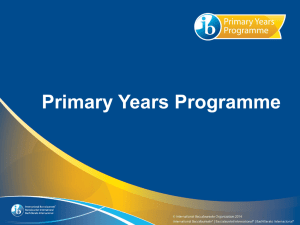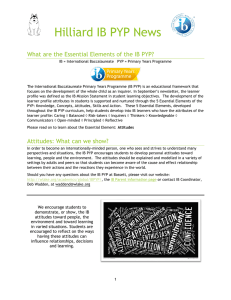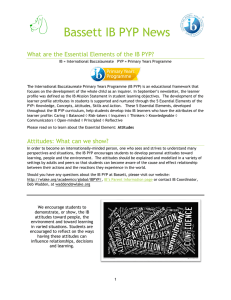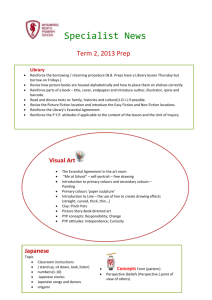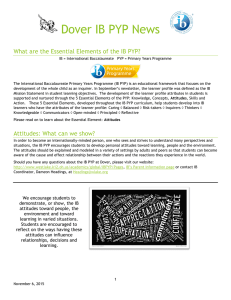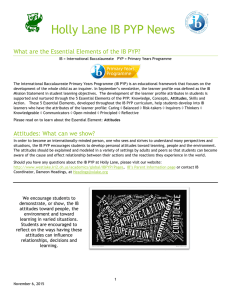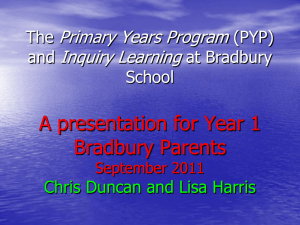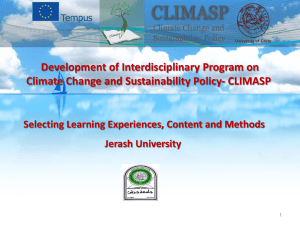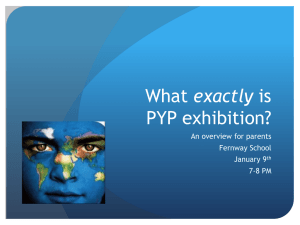PYP Attitudes in Child
advertisement
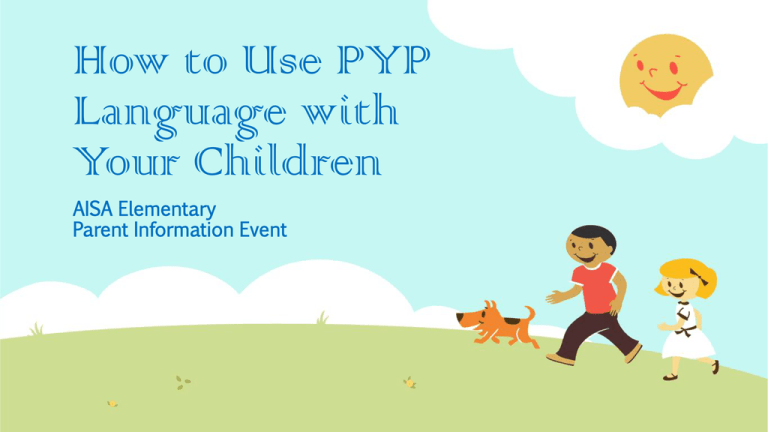
How to Use PYP Language with Your Children AISA Elementary Parent Information Event The Learner Profile & the PYP Attitudes Why use them? How can we simplify the language for children? The IB Learner Profile IB Mission Statement translated into behavior outcomes for internationalmindedness The ten attributes, or character traits, are values for a lifelong continuum of thinking, doing, being – a long-term vision of education that should be shared by the school, parents and students It is a common vocabulary for teachers, students and parents to use They need to be interpreted and modeled for children; we must look for authentic demonstrations of these attitudes in the daily lives of the children in order to raise an awareness of, and build an appreciation for them. We send home a request each unit for parents to share with us authentic demonstrations of these attributes We recognize the positive display of an attribute by two children from each homeroom monthly The PYP Attitudes Dispositions that are expressions of fundamental values, beliefs and feelings about learning, the environment and people Some attitudes reflect expressions of the Learner Profile (e.g., CaringEmpathy or InquirerCuriosity) Expressions of inner values that contribute to the good of the individual and the group The attitudes should not be part of a hidden curriculum but should be part of the daily language of the PYP classroom and hopefully the home environment; they are reported on in the UOI section of the report card They need to be interpreted and modeled for children We must look for authentic demonstrations of these attitudes in the daily lives of the students in order to raise an awareness of, and build an appreciation for them. Inquirers: I want to find out. I am curious to know about everything. Thinkers: I think before I act and talk. I can find solutions for problems. Communicators: I listen to your ideas. I share my views and express my ideas. Knowledgeable: Tell me more. I learn and share my knowledge with others. Risk-Takers: I have a go. I give it a try. I always try new things so I may know how things are done. Principled: I do the right thing. I follow rules and regulations. Caring: I am a good friend. I care for others. Open-Minded: It’s ok to be different. I respect other’s ideas, suggestions and criticism. Well -balanced: I take care of myself. I eat healthy and stay active. I work, play, and rest. I spend time with friends and with family. Reflective: I think back to remember how I did something well. I try to understand my mistakes and learn not to repeat them. I portray a positive image in front of others. Learner Profile in Child-friendly Language Appreciation: I am thankful for what I have. I am amazed by nature. I respect other people. Creative: I have different ideas. I use my imagination to help solve problems. I try to think of new ideas that have not been thought of yet. Tolerance: I accept and respect the differences of other people. I try to understand their needs and help them achieve those needs. Integrity: I am honest in my speech and action. I make sure that everything is done fairly for everyone involved. Respect: I am polite and kind. I treat my body and mind well. I care for others and the world around me. Confidence: I believe in myself that I can do something. I take what I have learned in the past and use it now. Curiosity: I want to know more. I wonder about the world—its people and nature. I have questions in my mind that I want to answer. Enthusiasm: I am excited about learning. I enjoy learning and have fun while doing it. I give my best effort and try my hardest. Independence: I can do it all by myself. I think and act for myself—not how others want me to. I stand up and speak out if others are not acting respectful. Cooperation: I work well with my classmates. I work well with others and share fairly. I am patient and wait my turn. Empathy: I imagine how others might feel. I use this imagination to help understand why they feel the way they do. Commitment: I finish what I start. I make responsible choices. I never give up, even when something is difficult. PYP Attitudes in Child-friendly Language Applying the LP and Attitudes to Subjects Computers example Music example Drama example Book covers example Ms Mongrain’s “homemade”posters Monthly “film” of Learner Profile Awards in rotunda Now it’s your turn to get in step with the program! In your table groups, discuss how you will use this language •At home •On holiday •Shopping •On family outings •Etc.!
